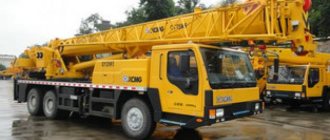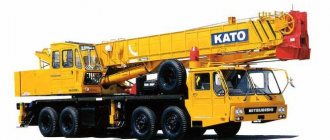Having learned that the GAZ Group was organizing an acquaintance with buses on the Nizhny Novgorod racing ring for journalists and clients, colleagues laughed: “This is a monocup!” Of course, not entirely, since both the manufacturing plants and their models are different. What's new?
I just arrived at the Nizhny Novgorod Ring, and I see that the Pazovites cannot start the brand new school Vector Next, which is standing on the demonstration site. They try both this and this key from a huge bunch - without success. We disassembled the column casing, removed the lock and shorted the wires directly... In the end it turned out that the required key had been touched somewhere.
I watch the process, and Pavlov’s stern men say:
- Which newspaper are you from?
“Auto review,” I answer.
— Did you write about Arkhangelsk?
- I.
- So that’s why our conveyor was stopped and the model was removed from production!
Yes, I will never forget this: in AR No. 1, 2009, I told “A Scary Pomeranian Tale” about how an Arkhangelsk carrier leased several grooves of the then new model 3204, and they fell apart during a year of operation. It was written in the documents: “complete destruction.”
Eight years have passed since then - how much water has flown under the bridge! That model was redesigned and successfully produced, and the Russian Buses holding, which includes factories, received a second name - the Buses division of the GAZ Group.
Over the years, the Gaza people lost one of the factories, GolAZ near Moscow: it suffered and suffered, trying to produce different models, and it all ended with a large batch of Voyage buses on Scania chassis, built for the Olympics in Sochi. Their quality turned out to be such that immediately after leaving the factory the cars were sent for rework and modification! As a result, GolAZ was closed, and the production of Voyages and Cruises on Scanie chassis was transferred to LiAZ.
The angular GolAZ Voyage (left) on a Scania chassis has now been renamed LiAZ Voyage. Cursor (in: This example was shown at the IAA 2016 in Hannover. The school Vector Next (right) can carry 25 children in seats with four-point belts
Now the Buses division has three plants: PAZ, LiAZ and KAvZ, and all of them together, based on the results of eight months of this year (data from the Avtostat agency), hold as much as 78% of the Russian bus market. They are practically monopolists, considering that the supply of imported buses for municipal and state needs is prohibited in our country.
True, KAvZ sold only 173 buses over the same eight months (compared to the same period last year - a drop of 11%). Eh, in vain they killed the cheap and mass-produced bonnet cars!
But the grooves are selling like hot cakes: in eight months more than 4,300 copies were sold (an increase of 28%).
And LiAZ, with its large city buses, sits tightly on municipal orders: about 1,100 vehicles were sold, 8% more than last year.
Recently, to the full-size, 12-meter LiAZ, a “shortened”, and in fact a completely new Kursor model with a length of 9.5 m was added. Let’s start with it.
Cursor
It was first shown two years ago: this is the first bus created by the GAZ Group as part of the unification of its model range. On the nose there is a Gaz emblem with a deer (in the future, the Gaz people want to erase the boundaries between their bus factories), the headlights are from Lawn Next, the engine is YaMZ-534.
The Liazov Cursor has a large GAZ emblem and headlights from Lawn Next. The facial expression is, of course, specific!
According to our information, today there are already more than a thousand Cursors running: 511 belong to the Moscow region Mostransavto, 369 to the capital Mosgortrans, there are them in Volgograd, Lipetsk, Khanty-Mansiysk, Krasnoyarsk and even Alma-Ata.
Low-Field Cursor with LF Index
But the low-field Cursor with the LF index is not cheap, about seven million rubles. Therefore, a simplified version of the LE “for regional markets” has now appeared - with a low floor only in the front part of the cabin and on Chinese HanDe Axle axles instead of German ZF portal ones. As stated, the price decreased by 20% (that is, to approximately 5.6 million rubles) - the Liazovites rolled out such a car to the ring.
Of course, the interior turned out to be a compromise: there are four steps in the rear, and passengers in the last row sit in a narrow “gallery”. And the driver's seat - with compromises!
Cursor interior in the new semi-low-floor LE version
Since I’m currently training to be a bus driver at the Mosgortrans plant, I’m used to driving full-size LiAZ-5292 cars around the capital with their large steering wheel and traditional front panel.
Driver's workplace of the low-floor Cursor
The low-floor Cursors, which were previously demonstrated at exhibitions (one of them was shown at the event), have the same steering wheel, which is also adjustable along with the panel. And the Cursor has LF...
The semi-low-floor Cursor has a grooved steering wheel and there are no automatic transmission keys on the front panel.
It’s as if it’s not LiAZ at all! The steering wheel is much smaller, from a groove, the panel (naturally, non-adjustable) is simple and raised higher, which slightly interferes with forward visibility. And where are the control buttons for the Allison automatic? No: it looks like the Allison remote control simply didn’t fit in the panel.
The Allison automatic selector is located inconveniently and is screwed inaccurately. The panel has large non-locking door control buttons
And instead of it there is a selector at the driver's seat. It is secured in the console inaccurately and literally pressed against the seat, and when switching, you had to look down so as not to make a mistake.
But the buttons for opening and closing the doors are good: large, red, backlit. You definitely won't miss it! But why are there two of them? Because this LiAZ also has two doors, not three: due to this, the number of seats has increased from 18 to 27.
The cursor steers competently and drives confidently, but the engine can be heard very clearly. When the car is “pulled”, vibrations from the engine even appear on the steering wheel - and this is when it is positioned in the rear! There are also typical Liaz brakes, but I’m already accustomed to them from the 12-meter models: the pedal is large and tight, the working stroke is short, and the braking system “grabs” sharply.
Serial production of semi-low-floor Cursors is about to begin, and in the meantime, the LiAZ team reported that they had simplified the large low-floor LiAZ-5292 in a similar way: it was also “transplanted” to Chinese HanDe Axle bridges. This option is considered low cost, “low budget”, in contrast to the “metropolitan” version with restyling and on ZF bridges.
Story
The division arose as a result of the reorganization of automobile companies belonging to the Siberian Aluminum Holding (later Basic Element), which were consolidated under RusPromAvto
consortium.[3] RusPromAvto (Russian: RusPromAvto) was created on August 7, 2000 and united several Russian bus manufacturers. LiAZ was added to the group in 2001.[4]
It became known as Russian Buses
(Russian: Company Russian Buses, romanized: Company Russian Buses) in May 2004 and was based in the village. Malye Vyazemy in Moscow region. In 2005, during the restructuring of RusPromAvto's production assets, the company was included in the GAZ Group.
Vector Next
This “new groove” is a Gas product one hundred percent, since it is based on the finished chassis of the Lawn Next, only with air suspension at the rear. We have already talked about this model in detail, but then I was only able to drive around the site a little.
Vector Next turned out okay, although with a somewhat Asian appearance
This was the reason for the error: I wrote that the Vector Next engine was quiet, but objections from readers immediately began to pour in. And they are right!
Since the Vector Next is built on the Lawn Next chassis, the engine casing is raised at the front
At speed, the engine (the same YaMZ-534 as on the Cursor, only less powerful, 150-horsepower) makes quite a loud noise - maybe it would be worth making the sound insulation of the engine compartment and its cover more solid?
But drivers will light up in vain. The dynamics are impressive, the steering wheel with the gazelle steering wheel is very informative, and there is little roll in corners. It’s a pity, the gearshift lever travel is “rubbery” and quite large, and when reverse gear is engaged, the lever touches the seat. I was also wary of the brakes: the deceleration did not seem as effective as I expected. Or is it after the Cursor with its sensitive pedal?
But in general - a completely different groove. Alas, and for the price: Vector Next - with a simple interior and seats covered in gray leatherette - costs about three million rubles, twice as expensive as a regular PAZ-3205! Hence the relatively small sales: in eight months - 518 cars.
Vector Next can now be equipped with a folding ramp for the disabled
Now the Pazovians are expanding the range: a school bus and a version with a ramp for the disabled have been created, and in the future there will be a gas version and longer versions. In addition, the Vector Next can already be a long-distance vehicle with soft seats and even a luxury one, with an Allison automatic transmission and luxurious leather seats. Driving here will be comfortable, but still noisy...
Bus frame of GAZ Group
Sergey Suvorov, photo of the author and manufacturing company
The leader of the Russian market of passenger vehicles, GAZ Group, has significantly updated its model range of buses over the past couple of years. We had a quick look at the new products back in September at the ComTrans'2017 exhibition, where the updated LiAZ “Cruise New”, a revolutionary electric bus and other non-standard new products were presented. But not these exclusive airliners, but much more popular and ordinary models, such as PAZ Vector Next, LiAZ Kursor and KAvZ-4270 form the basis of the company’s sales - its model frame. We were able to study them in detail in October at the Nizhny Novgorod Ring motorsport track, where the presentation of these new products to the company’s key clients took place. Representatives of manufacturing plants spoke about the latest achievements and plans for the development of their enterprises, and then gave them a chance to drive their new products directly on the track.
Development prospects During the presentation, representatives of the GAZ Group repeatedly announced their company’s leading position in the Russian bus market, but, unfortunately, did not announce specific figures. Fortunately, these are publicly available on the Internet with reference to data from the Autostat agency. So, based on the results of the first half of 2022, of the total volume of new buses sold in the Russian Federation, the share of GAZ Group products accounts for about 75%. If we translate these indicators into quantitative terms, then out of 5.2 thousand new buses (excluding the LCV segment) registered from January to June 2022, sales of the Pavlovsk Bus Plant amounted to 3 thousand units, LiAZ - 841 units and KAvZ - about a hundred units . And although the share of KavZ in the statistics given is negligible, the news and products from this enterprise attracted the greatest interest from invited guests and journalists.
The Aurora family buses, which migrated from PAZ to KAvZ, are in small but stable demand mainly among law enforcement agencies and corporate customers
Restyling of the KAvZ-4235 model involves updating the design of the front mask, replacing the MMZ engine with a YaMZ-53403 Euro-5, a new Bosch steering mechanism and front air suspension
In the aggregate part of the 10-meter KAvZ-4238 2022 model year, similar metamorphoses will occur, and the water design will become noticeably more interesting
Andrey Gennadievich Sukharev, representing the Kurgan Bus Plant, spoke about the upcoming restyling of the enterprise’s two basic models - the 8.4-meter suburban KAVZ-4235 and the 10-meter suburban/intercity 4238. Thus, from 2022, in the basic version, passenger cars will be equipped with an in-line 4-cylinder turbodiesel YaMZ-53403, corresponding to the fifth environmental class. In the renderings accompanying the presentation, one could see that despite the technical similarity of the two models, they will receive different front design designs. The component base will be updated due to the use of a Bosch brand steering mechanism, the replacement of springs in the front suspension with pneumatic elements, and the standard installation of an exchange rate stability system (ESC).
In 2008, KAvZ already attempted to create a medium-class semi-low-floor urban bus 4239 on the Chinese JAC aggregate base, but the attempt was unsuccessful
And so, in 2017, Kurgan bus manufacturers present a bus with a similar layout, but of the original design KAVZ-4270 with a Cummins gas engine
Regarding the promising development of the plant - the semi-low-floor urban 10-meter KavZ-4270, a prototype of which is driven by a Cummins BGe5 gas engine, then if the bus is put into mass production in 2022, it will receive a more familiar YaMZ-53403 Euro-5 diesel engine. . But we will talk about this car in more detail, but for now we will briefly talk about the prospects of the PAZ, told at the presentation by Evgeniy Igorevich Chaykin.
In connection with the appearance of semi-low-floor urban mid-size vehicles from LiAZ and KAvZ, Pavlovsk bus manufacturers will stop offering their exotic car PAZ-3237
In 2022, PAZ will focus on expanding the model range of the 3205, 3204 and Vector families with new all-gas modifications with ZMZ, YaMZ, Isuzu and Cummins engines
In 2022, the plant from the banks of the Oka will continue to produce small and medium-class buses of several generations at once: the veteran PAZ-3205 and its extended version 4234, which replaced it 3204 and its modifications (including the restyled Vector), as well as the new family of Vector vehicles Next, built on the platform of the GAZon Next medium-duty truck. By the way, in connection with the appearance of the urban low-floor 9.5-meter middle-class model Cursor at LiAZ, Pavlov refused to produce an atypical car of a similar size and layout - 3237 - and concentrated on increasing the number of gas modifications. In particular, to the 6 models of gas buses already in production with engines operating simultaneously on two types of fuel (gasoline/diesel+natural gas/propane-butane), in 2022, fully gas models of buses of the 3205 and 3203/3204 families with power plants will be added V8 "Euro-5" CNG Zavolzhsky Motor Plant.
PAZ is also actively working to expand the model range of its new product - the Vector Next frame bus, built on the GAZon Next chassis, through gas, school and intercity versions
And this Vector Next is adapted for the “Accessible Environment” program, for which its rear overhang is made low-floor, with a 2-leaf door and a folding ramp for a wheelchair user
The line of the latest development - the 7.6-meter frame bus Vector Next, in addition to the gas modification with the YaMZ-534 CNG engine, in 2022 will be replenished with a modification with a low floor level in the rear overhang, created as part of the “Accessible Environment” program. For ease of entry/exit for people with disabilities, it has a double-leaf rear hinged door with a folding mechanical ramp for a wheelchair user. An order for two and a half hundred similar buses with Allison automatic transmissions has already been placed by carriers from the Moscow region.
The LiAZ electric bus successfully passed 6-month tests on Moscow routes
The Likinsky Bus Plant also regularly supplies its passenger vehicles to the capital's regions, and according to Roman Budeev, their plant is now fighting for the right to supply several hundred 12-meter passenger vehicles with an all-electric power plant to Moscow. One such bus successfully passed tests conducted by the State Unitary Enterprise Mosgortrans from February to July 2022 on one of the capital’s routes. Charging the bus at the final stops took about half an hour, and daily runs reached 200 km. The world's leading electronics companies - Siemens and Continental - took part in the development of the bus.
The modernized LiAZ Cruise New tourist liner received a new front end, aquarium glazing, imported doors and a whole host of electronic driver assistants
As for the main model range of the plant from Likino-Dulevo, it is represented by the latest 9.5-meter low-floor middle-class bus Kursor, the classic 12-meter urban LiAZ-5256 and modifications, the low-floor 5292 with modifications, the articulated 18-meter 6213, as well as intercity and tourist models Cruise and Voyage on the Scania bus chassis, which LiAZ inherited from the abolished Golitsinsky bus plant. It is noteworthy that it is in the camp of tourist models that the long-awaited update is expected - in 2022, LiAZ will begin production of the deeply modernized 12-meter tourist Cruise New. It will be externally distinguished from the previous model by the new design of the front and rear masks using headlights from Vector Next, the so-called “aquarium” external glazing that hides the body pillars and seamless body panels. The doors will receive compact imported opening mechanisms with a short rod, as well as a wheelchair lift in the bowels of the second door. The updated Scania chassis will also make it possible for the first time to use driver assistance systems on the Cruise: emergency braking, lane departure control, adaptive cruise control, remote diagnostics and others. A prototype of this machine could be observed as part of the street exposition of the ComTrans'2017 exhibition. But it’s time to move from words to action, or rather, to a test drive of GAZ Group’s new passenger products.
Vector Next is a 7.6 meter frame bus with a YaMZ-53443 engine and a 5-speed gearbox, designed for 50 passengers, 21 of which have seats
Test drive As noted above, three new products were provided for sea trials: Vector Next, LiAZ Kursor and KAvZ-4270. The company is already noticing increased interest from carriers in new products, and the clear favorite in popularity is the 7.6-meter machine from Pavlovo – Vector Next. Unlike the previous PAZs - 672, 3205 and 3204, which were full-fledged small-class buses with a high floor level and a monocoque body, Vector Next refers us to the first bus model mastered by Pavlovsk bus manufacturers in the early 50s - PAZ-651. It did not have a supporting body and was built on the chassis of a GAZ-51 truck. The modern Vector Next is built on the same principle, based on the chassis from GAZon Next. Due to its almost identical component base, the bus was quickly put into production and turned out to be slightly more expensive than model 3205, but cheaper than 3204. And in terms of ergonomics of the driver's seat and handling, it surpassed all previous cars.
For the driver, the PAZ traditionally has a separate door, behind which there is an anatomical air-suspended seat, an adjustable steering column and a modern front panel
The only bad location is the ignition switch on the right side of the steering column, which, if you’re not used to it, you can hit with your knee when getting into the driver’s seat. Many interior elements are borrowed from Nizhny Novgorod Next generation trucks
Convenience for the driver begins, as they say, “from the threshold”, due to the fact that access to the driver’s seat is organized through a separate door, behind which hides an air-suspended seat, an adjustable steering column, and a compact steering wheel (the same as that of the GAZelle Next) . The only note is the ignition switch located on the right side of the steering column, which, if you’re not used to it, you can hit with your knee when making your way to the driver’s seat. Let me note right away that this element is unified among the bus products of the GAZ Group and does not cause any complaints on those models where the approach to the driver’s seat is organized through the front passenger door (as on LiAZs).
Due to the “sharp” steering, high-torque turbodiesel and assembled suspension, the Vector Next allows you to circle the Nizhny Novgorod Ring at the pace of a small city car
Having settled comfortably behind the wheel and having noticed the instrument panel, gear knob and other elements already familiar from GAZelle and GAZon Next, we start. A combination of a 4-cylinder 150-horsepower turbodiesel YaMZ-53443 coupled with a 5-speed manual gearbox GAZ C40R13 easily accelerates an empty 6.2-ton car from second gear and by the end of the starting straight of the Nizhny Novgorod Ring (which is only 400 m) arrow The speedometer exceeds 70 km/h (V gear). Then follows a sharp left turn with cones pre-placed by the test drive organizers, simulating a “snake” exercise. The bus quickly and predictably decelerates and goes through the proposed exercises without strong rolls and swaying at 35-40 km/h. Another strong side of the new PAZik is immediately revealed - the steering wheel is “sharp” by bus standards, making only three turns from lock to lock. The bus allows you to cover the remaining distance of the sports track at the speed of a modern B-class passenger car, and this makes it really scary - what will reckless drivers do on Vector Next, who even today take the lead on much less frisky and uncomfortable “minibuses” traffic light races?
LiAZ Cursor is the exact opposite of Vector: smooth throttle response, noticeable roll in corners, lulling swing and “long steering wheel”
An intuitive Allison automatic transmission and excellent visibility contribute to a comfortable stay behind the wheel, but the brake pedal is very tight and uninformative
But the bright emotions from Vector Next are calmingly drowned in the soft air suspension of the driver’s seat of the new semi-low-floor LiAZ Cursor. In this 9.5-meter urban semi-low-floor middle-class car, everything sets the mood for a calm mood: it’s the driver’s cabin separated from the passenger compartment by a partition, and the huge-diameter steering wheel, and marked only up to 120 km/h (and not up to 160 as on the PAZ ) speedometer, as well as the automatic transmission selector. After shifting the Allison torque converter 5-speed automatic transmission to position D, the bus slowly picks up speed, smoothly swaying in the longitudinal direction. If you take your foot off the gas pedal in advance, the adaptive automatic transmission will automatically shift to a lower gear without forcing the driver to resort to the standard braking system. I would like to note that the American “automatic” installed on the test “Cursor”, even in such atypical operating conditions for a bus as a sports car track, never caused any complaints: without a break in the transmission of torque from the engine to the drive axle, it changed gears, always on time switched to a lower range, and in general it seemed to me the best option for a city bus of this size and weight. Of course, the roll in turns and when passing a snake is much more noticeable here than in the Vector Next, and the reactions to the pedals and steering are noticeably weaker compared to the PAZ, but if I had a choice between the two named buses, I would choose the LiAZ without hesitation The cursor is both a driver and a passenger. Because the creators endowed it with all the noble habits of modern large-class city buses.
LiAZ Cursor is available in two versions according to the interior layout: 3-door, completely low-floor and 2-door, with a high floor at the rear. During the test drive it was the second option.
The interior of this LiAZ is good for everyone, but it lacks several handrails in the rear of the cabin and room for the passenger’s knees in the last row of seats
But in my internal rating, LiAZ had to compete with another passenger car provided for a test drive. This is a 70 cm longer LiAZ classmate - the semi-low-floor KAvZ-4270. Unlike the production models from PAZ and LiAZ that I have already tested, this Kurgan bus is still listed as a prototype, and although it is a new product of the GAZ Group, it does not wear the corporate GAZ emblem with a deer on the front, but the badge of its own manufacturer. KAvZ is generally unified to a minimum with other GAZ Group buses. For example, despite similar weight and size characteristics to the Cursor, it has an original body, DANA hypoid axles rather than ZF portal axles, a 6-cylinder Cummins BGe5 CNG gas engine rather than a 4-cylinder YaMZ, six rather than five range automatic transmission, and so on. .
The experimental 10.2-meter KAvZ-4270 is close in layout to the Cursor, but is equipped with conventional rather than portal axles, a Cummins gas engine and a 6-speed Allison automatic transmission
On the way to mass production, the KAVZ's aggregate base will still undergo adjustments, but the two steps at the entrance to the salon and the huge internal height of the salon will remain unchanged.
In this regard, the KAvZ drives and controls differently from the LiAZ. For example, it does not have the lulling longitudinal rocking characteristic of the new LiAZ. The Allison 6-speed automatic transmission is not only controlled differently (with buttons on the front panel, and not with a lever to the right of the driver’s seat, as on the LiAZ), but also has different settings: upshifts are more noticeable, and engine braking when coasting less effective than LiAZ. Due to the slightly higher driver’s seating position in the KAVZ, you feel worse about the dimensions of the bus, and in general, the suspension and steering settings in the Ural car seemed to me a little rougher than in the Moscow region vehicles. But where KAvZ is an undisputed leader is in setting up brakes. Unlike the LiAZ with its “oaky” brake pedal and sharp deceleration at the very beginning of the pedal stroke, on the Kurgan bus it is enough to apply moderate force on the pedal so that the car begins to slow down in proportion to the applied force. Plus, the 4270 is additionally equipped with a hydrodynamic retarder, which saves on the standard braking system.
The driver's seat in the KavZ is installed above the LiAZ, and the 6-speed automatic transmission is controlled by a remote control. Brake tuning - the best of the test trio
High sides make it difficult for short and medium-sized passengers to see out of the side windows from the front seats. But there are plenty of handrails, both in the front and rear parts of the cabin
From the point of view of passenger comfort, the buses are approximately equal: they have sufficient width of doorways, comfortable anti-vandal seats for a short city trip, a large glass area and high-quality interior assembly. When entering LiAZ you need to overcome only one step, while in KAvZ there are two, but the latter has a kneeling system for tilting the body towards the stop. In addition, the LiAZ, despite the “picket fence” of handrails in the front half of the cabin, clearly lacks handrails above the rear rows, while in the KAvZ they are distributed more evenly throughout the cabin. It is worth noting that the creators of the compared vehicles had to make compromises caused by the semi-low-floor layout of their buses. In the LiAZ Cursor, such a compromise was the rear row of seats, which was greatly reduced in terms of space for the knees of seated passengers, literally crushed by the backs of the previous row. And in the KAvZ-4270 there is a high window sill in the front part of the cabin, because of which only seated passengers taller than average can look out of the window.
If the KAvZ-4270 reaches mass production, then the base for it will be the “all-gas” 4-cylinder turbodiesel YaMZ-534 (pictured), and not the Cummins gas “six”
But these are insignificant little things that should not in any way affect the operating efficiency of the generally successful and comfortable buses of the GAZ Group. It remains to add that all three vehicles have excellent market prospects, and if Vector Next and LiAZ Kursor are already proving this with real sales, then the KAvZ-4270 has a good chance of this, because the start of production is scheduled for 2018.
KAvZ-4270 CNG
Journalists were hunting for this car, which was driving around the track, with cameras: few people had seen it yet, since in eight months of this year, according to Autostat, only eight copies were sold.
Kurgan residents have prepared a compact gas bus for the regions: length - 10.2 m, at the entrance there is a step (and the interior in the rear is raised), on the roof - cylinders with compressed methane, in the rear - a Cummins engine, gearbox - the same Allison "automatic" , bridges are Dana brands.
Of course, from the design of the interior (which smells of plastic) and the cabin, it is clear that the Kurgan plant does not live well: the interior is simpler than that of LiAZ, with partitions “like wood” and flanging the floor with aluminum corners. The driver is separated from the entrance only by that same partition, and the steering wheel is not adjustable at all, which makes the microclimate and ergonomics far from ideal.
The interior of the KAvZ is quite simple, but spacious.
But the panel is made better than that of the Cursor (gear shifting is done with buttons, and a video system monitor is built in nearby), and the car is controlled surprisingly well - the steering wheel is even slightly tight. However, the engine can be heard very well here even from the cabin, and you also have to be careful when turning: the cylinders on the roof make the car tilt like a yacht.
With regard to efficiency, not everything is clear yet: in the catalog it is printed that 665 liters of gas should be enough for 475 km, but in the presentation shown, the reserve is 662 liters and it will be enough for 350 km (apparently, the latter figures are closer to the truth). In any case, the factory workers assure that the car will be profitable, also because it falls under the state subsidy program for gas engine equipment. If the initial price is as much as 7 million 340 thousand rubles, then after deducting the subsidy, 4 million 540 thousand remains. The main thing is that there is a methane gas station next to the park!
Recommendations
- "About company". Bus.ru.
_ Retrieved June 2, 2022. - "Likinsky Bus Plant". gazgroup.ru
. Archived from the original on April 8, 2022. Retrieved April 30, 2017. - Inc. IBP (2009). Industry of the Commonwealth of Independent States: Automotive Industry Directory - Strategic Information and Contacts
. Lulu.com. paragraph 159. ISBN 9781438709369. - “Deripaska said that he understands buses very well.” The Moscow Times
. Retrieved June 2, 2022. - "Structure". Bus.ru.
_ Retrieved June 2, 2022. - “One less bus brand: GolAZ has become history.” Auto and more
. Retrieved June 2, 2022.
* * *
Do you know what the management company of the bus division of the GAZ Group reminds me of? The headquarters of the armed forces of several states at once: both the factories scattered across the country and their machines are painfully different. They were created in different years, by different design teams, each with its own components, its own design, its own behavior... And bringing all this to a single denominator, as has already been done with GAZ Group trucks, is not so easy. There are a lot of models and modifications (I counted 75 options in the dealer price list), there are problems with their positioning (there are different buses with similar characteristics in the range) and with difficult-to-remember digital indices.
But the course towards unification has been taken correctly - it would only be a pity if at the same time the names of the factories disappear from the buses. It would also be great if all the main series got names in the future. Then the same new KAvZ would not have a faceless digital index, but a memorable name - say, Tobol (this river flows through Kurgan). I am making an improvement proposal!
Structure
Division companies:[5]
- Kurgan Bus Plant (KAvZ)
- Pavlovsk Bus Plant (PAZ)
- Likinsky Bus Plant (LiAZ)
Former companies
- Golitsyn Bus Plant, the brand's production was discontinued in 2014, and the plant now produces agricultural equipment.[6]
- Kanashskiy Avtoaggregatny Zavod (Russian: Kanashskiy Avtoaggregatny Zavod (KAAZ), romanized: Kanashskiy Avtoaggregatny Zavod (KAAZ), manufacturers of bus chassis.










